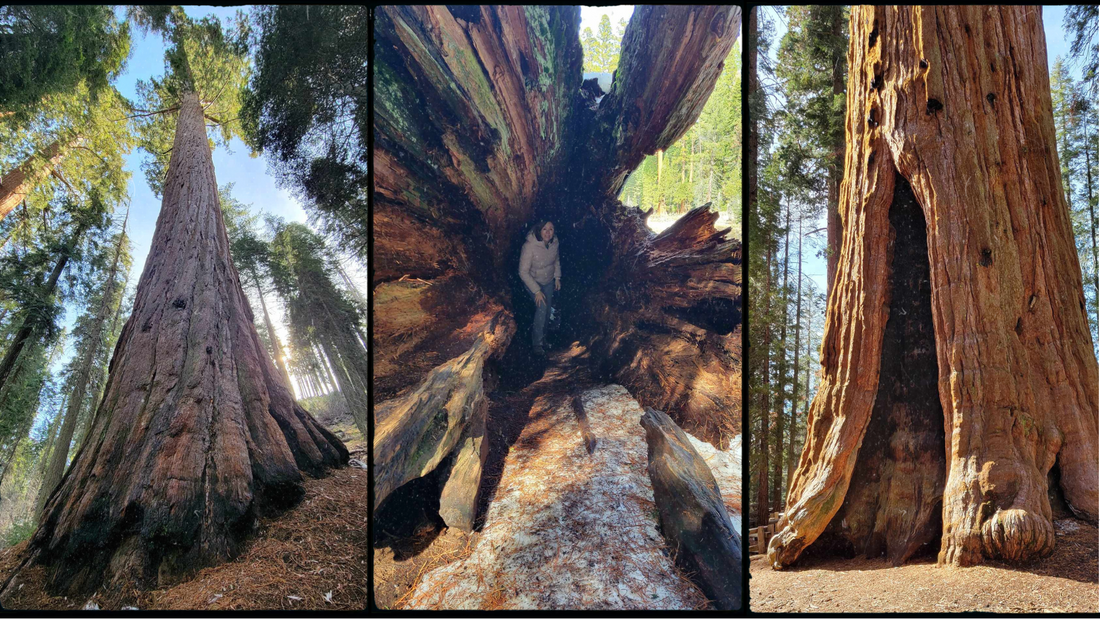We recently took some awe-inspiring and humbling walks along snow-dotted dirt paths among the giant trees in Sequoia National Park.
Sequoias are the most massive trees in the world and live thousands of years, but their life cycle is precarious. I couldn’t help but compare the probability of a tiny sequoia seed making it to become a mature and majestic tree to the life cycle of a book.
Distributed across the entire globe before the last ice age, today giant sequoias are only found at certain elevations and slopes of the Sierra Nevada mountain range in California.
They rely on the four elements—fire, water, air, and earth.
You could say that books also rely on four elements—a good story, readers, social proof, and availability.
We normally associate fire with destruction, but fire is absolutely vital to the sequoia’s life cycle by triggering the release of hundreds of tiny seeds gripped tightly between the scales of egg-sized cones. Fire also clears the forest floor of other plants that might compete for precious resources and fertilizing the earth with ash.
Thousands of seedlings might sprout up in the crumbly, fertile soil that holds just the right amount of moisture, but the chances of these seedlings growing into mighty giants is very slim.
Many seedling ideas for stories might come to people every day, but it takes a burning desire before a person sits down to write that story. It then takes much time, effort, and dedication—so many factors aligning—for that seedling of a story to be shaped into a complete story that other people will enjoy reading. To put it into perspective, that process took over a decade for my first novel, From Ashes to Song.
Then even once the story has morphed into one worthy of sharing, there’s another harrowing and unpredictable path that determines whether the story actually turns into a book.
For authors pursuing a traditional path, the question is whether a publisher will pick up the story. For those interested in walking an independent path, the question is whether they have the fortitude, dedication, and funds to produce a quality book. Either path can end in a dead end for multiple reasons.
Just like a century-old sequoia still faces adverse odds, once in print, a book still needs to beat the odds to become profitable.
Though distribution is easier today than ever, readers still need to find the book, which can often seem as unlikely as an explorer to a new continent crossing a daunting mountain range on foot and just happening upon the right slope and elevation where they’ll find a forest of giant trees.
And just as the existence of sequoias were threatened by loggers and a budding tourist trade before early environmentalists insisted the trees needed to be protected, books will only go on to be successful if readers share their opinions, endowing a book with the social proof it needs to thrive.
I don’t know about you, but I’m exhausted just thinking about all this.
So let me wrap up by expressing my immense gratitude to you for all the support you’ve given me and my books to date, whether that support comes from reading my stories, posting reviews, and recommending them to reader friends, or even just reading my newsletter until the time is right to read one of my stories.
Whatever paths, dirt or more solid, you are currently exploring or that might be in your future, may they be exciting, rewarding, and deliver better chances of success than a giant sequoia!

